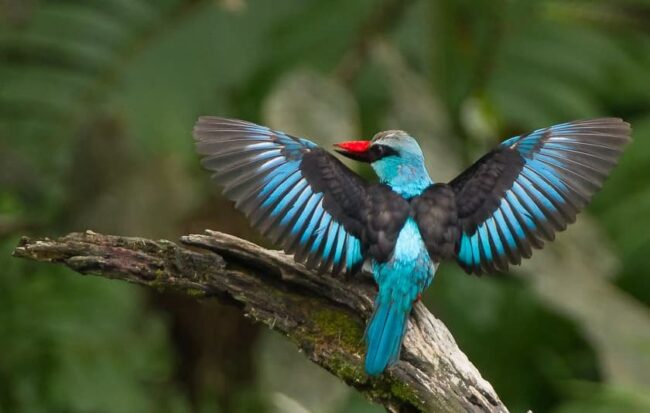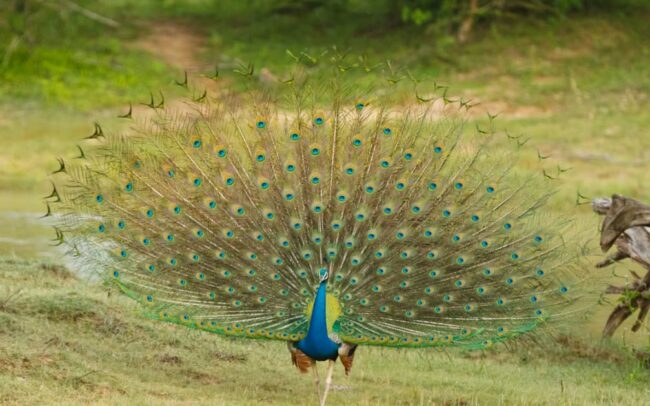Welcome to our blog post dedicated to the Blue Whistling Thrush (Myophonus caeruleus), a captivating bird known for its vibrant plumage and melodious songs. Join us as we delve into the fascinating world of this remarkable thrush and discover its unique features and behaviors.
Field Identification
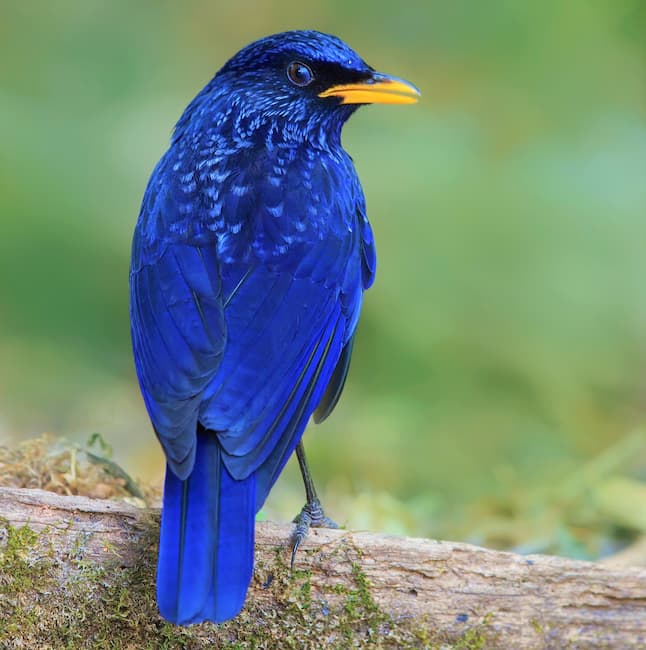
The Blue Whistling Thrush is a medium-sized bird with striking blue plumage. Its deep blue coloration extends across its body, wings, and tail. It has a long, slender beak and bright yellow eyes that add to its distinctive appearance. Juveniles and females display a slightly duller coloration, with a mix of gray and blue.
Systematics History
The Blue Whistling Thrush belongs to the family Muscicapidae, which includes a diverse group of Old World flycatchers and chats. It is classified under the genus Myophonus, which comprises several species found across Asia.
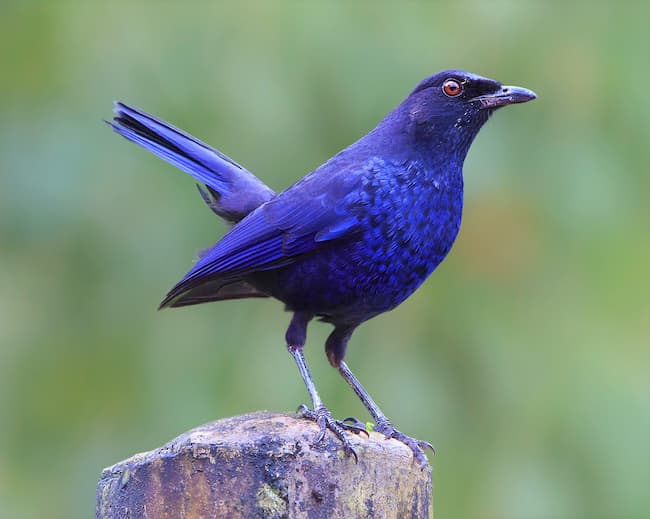
Distribution
Blue Whistling Thrushes are native to various regions of Asia. They are commonly found in the Himalayan foothills, including countries such as India, Nepal, Bhutan, and Myanmar. They also inhabit parts of Southeast Asia, including Thailand, Laos, and Vietnam.
Habitat
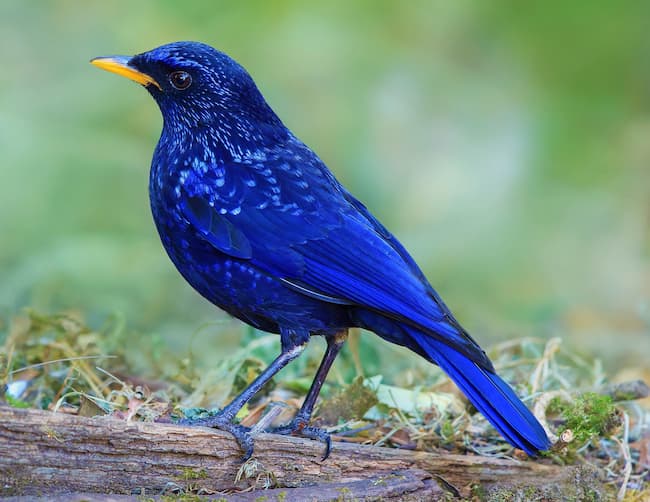
These thrushes prefer habitats near fast-flowing streams, rivers, and forested areas. They can be found in both primary and secondary forests, as well as in montane regions. Their affinity for water is evident as they are often seen perched on rocks or wading in streams.
Movement and Behavior
Blue Whistling Thrushes are sedentary birds that occupy territories throughout the year. They are known for their melodious whistling songs, which they use to communicate and defend their territories. They are also adept at hopping and climbing on rocks and trees while foraging for food.
Diet and Foraging
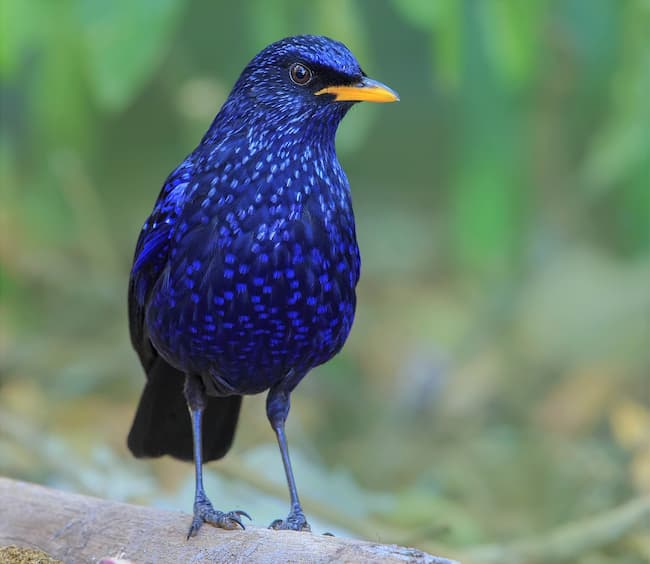
Their diet primarily consists of invertebrates such as insects, worms, and snails. They are skilled foragers and use their sharp beaks to search for prey under rocks, leaves, and in the soil. They may also feed on small fruits and berries, especially during the non-breeding season.
Sounds and Vocalizations
The Blue Whistling Thrush is famous for its enchanting whistling calls that echo through the forest. Males often produce a series of rich, musical notes that can be heard from a distance. Their songs vary in length and complexity, and they use them for territorial defense and courtship displays.
Breeding Habits
During the breeding season, Blue Whistling Thrushes build cup-shaped nests made of twigs, leaves, and moss. These nests are typically located in rock crevices, tree hollows, or even man-made structures like buildings. Females lay a clutch of 2-4 eggs, which they incubate for about two weeks. Both parents participate in feeding and caring for the nestlings.
Conservation Status
The Blue Whistling Thrush is currently classified as a species of Least Concern on the IUCN Red List. However, habitat loss and degradation due to deforestation and urbanization pose potential threats to their populations. Conservation efforts focus on protecting their forested habitats and raising awareness about their ecological importance.
Frequently Asked Questions (FAQ)
Q1: Do Blue Whistling Thrushes migrate?
A1: Blue Whistling Thrushes are generally sedentary birds and do not undertake long-distance migrations. They occupy their territories year-round and remain in their preferred habitats throughout the seasons.
Q2: Can Blue Whistling Thrushes imitate other bird songs?
A2: While Blue Whistling Thrushes are known for their melodious songs, they primarily produce unique whistling calls rather than imitating other bird species. Their vocalizations are distinct and contribute to their territorial communication.
Q3: Are Blue Whistling Thrushes commonly kept as pets?
A3: Blue Whistling Thrushes are wild birds and are not recommended as pets. It is important to appreciate their beauty and observe them in their natural habitats without disturbing their populations.
Conclusion: The Blue Whistling Thrush, with its vibrant blue plumage and enchanting melodies, is a true gem of the Asian avian world. Its presence near flowing water and its melodious whistling calls make encounters with this bird a delight for birdwatchers and nature enthusiasts. By ensuring the conservation of their habitats and raising awareness about their significance, we can help protect the Blue Whistling Thrush for generations to come.
